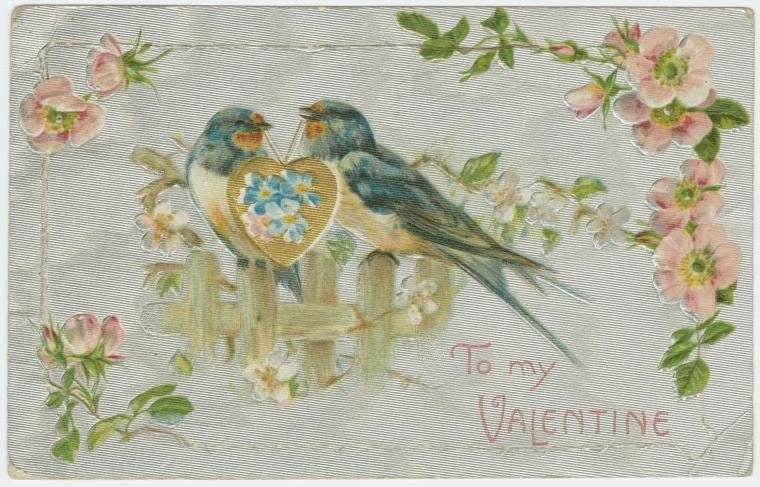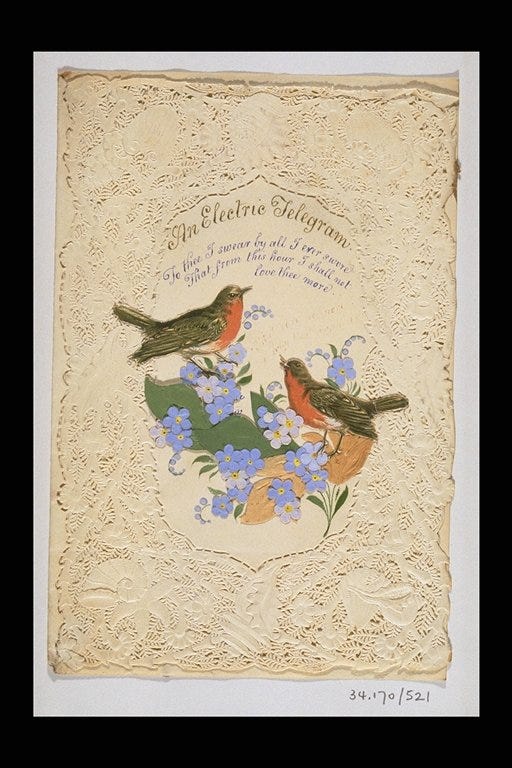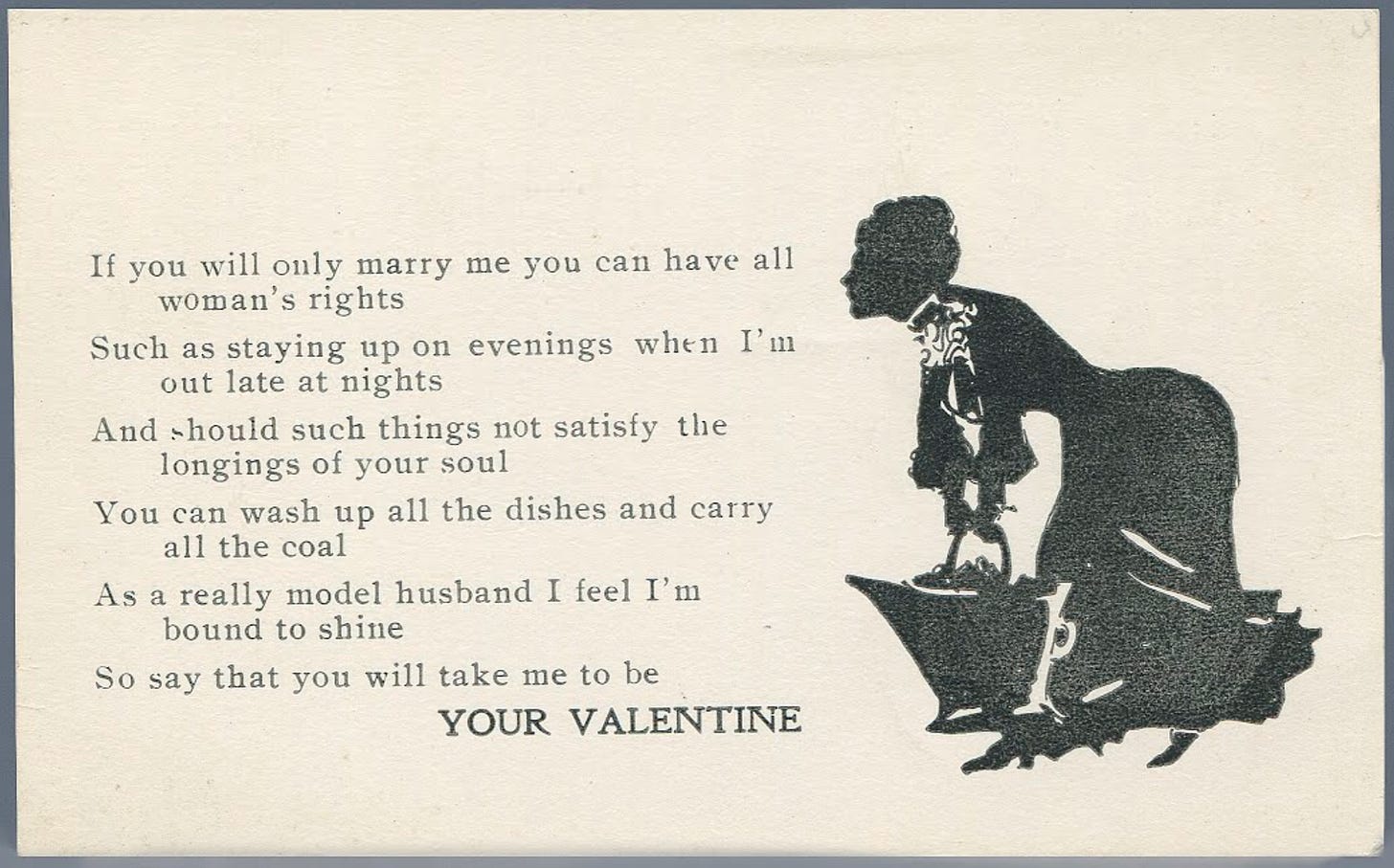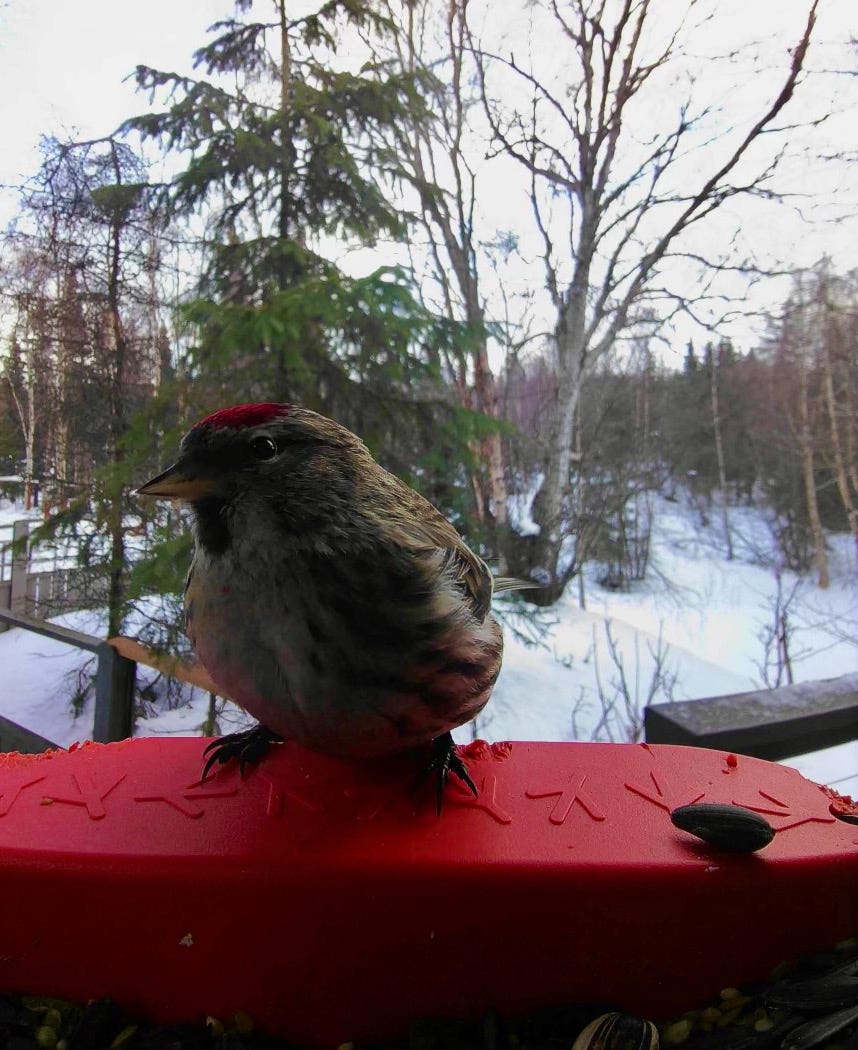Yesterday as I was out I heard a raven calling—and it was a spring call. It’s a sound a bit like a drop of water being thrown across the air and returning, sounding like their voice has found its own echo. It’s a call for a mate.
It is not spring here. Leaves don’t arrive in Anchorage until late May at best. But it has warmed up after a very long dip into sub-zero temperatures, and with the light inching higher and lingering noticeably each day as we gain daylight, there is a feeling in the air that a new season is no longer quite so distant.
I thought of that raven call when I read recently that the first mention of St. Valentine’s day as a day to celebrate love, originates in the c. 14th-century poem A Parliament of Fowls by Chaucer. In it, he cites St. Valentine’s Day as the day when birds choose their mate:
For this was on seynt Volantynys day / Whan euery foul comyth there to chese his make.
(For this was on Saint Valentine’s Day / When every bird cometh there to choose his mate)
While today February 14th is still far from spring, Chaucer wrote when the Julian calendar was the rule, which would have placed February 14th farther along in the move towards spring (e.g., today would be January 31st by the Julian calendar, making February far closer to the spring equinox—which is why Groundhog’s day and talk of spring in February has continued, despite being almost a month off…)
A Parliament of Fowls is framed as a dream sequence poem: Chaucer dreams of visiting the temples of different gods, until he arrives at Nature’s, where a parliament of all birds has assembled, on St. Valentine’s Day, to choose a mate. There are descriptions of lapwings, magpies, ravens, swans, swallows, nightingales, starlings. And then there are three eagles, described as the most noble of the birds assembled, where three males present their case to a single female eagle. By the end, however, the female eagle is not impressed. She chooses not to choose, and Nature honors the female eagle’s choice to remain single.
It’s not exactly how Valentine’s Day is presented to us, is it? But it is very much a story of love—of a single female [bird] who loves herself enough to listen to her own voice, rather than those of others, and of her voice being honored by the goddess Nature.

I generally don’t love Valentine’s Day—because, as you might guess, I am skeptical (some might even say, ahem, cynical) of what the world tells us we should feel and do. But perhaps we should consider a Valentine’s Day revolution.
Because I do have love for the birds who are active in the cold sunlight, which still has some new warmth to it. And I love to think that centuries ago a man wrote down a story of birds coming together in the spring to choose a mate, and of Nature presiding as a benevolent god to witness a female eagle who wanted something different than a mate, and honored that choice. That is something that feels worth celebrating: a day where Nature honored those who wished not to mate, as much as those who wished to pair.
The world in the year of our lord 2024 could use more models of honoring such personal choices.
The connection between birds and spring, of love and building something together is also found in a medieval manuscript, which
wrote about today. It’s a small verse written on the end leaf of an 11th c. copy of Ælfric’s Old English homilies, where the scribe had written in the margins as a way to test the pen—a quill (from a bird!):All the birds have begun their nests / Except for me and you / What are waiting for now?
This verse, recovered in 1931, has only recently been thought to have been written by a woman. Words written by a woman with the wing feather of a bird, dreaming of perhaps flying to a lover who is far distant. A woman who was writing about love in a time that is too often assumed, falsely, to have had no women writers.
So perhaps Valentine’s Day has more to it after all than only another shallow commercial holiday. Perhaps it could be a day of looking to the skies, writing with wings, honoring the choices we all make and those we do not—no matter, or in spite of, what others do. To recognize that the day we are told to celebrate has centuries-old roots in an awareness of the shifting season, of noticing the activity of birds and the new calls they fill the air with. Of finding joy in their energy and song, as much as in a joyful love of love, whatever shape that takes. To know that just as spring will arrive at some point, we can choose to join in or to find other ways to be—and that Nature will honor all of it.

P. S. What is thought to be the first Valentine's card is from 15th century Charles d’Orléans to his wife while imprisoned, but is actually an anti-Valentine: “Despite being addressed to ‘my very sweet Valentine’, the poem is not a personal message of affection like today’s Valentine’s cards. It actually refers to the courtly practice of holding a lottery on St Valentine’s Day in which everyone was assigned a partner, generally not their husband or wife, who was supposed to be their ‘Valentine’ for the year. This was a rather artificial enactment of the concept of courtly love, in which knights were supposed to devote themselves to the service of a married lady. In the poem, Charles excuses himself from the custom, apologetically telling his allotted Valentine that he’s too old and tired.”
P.P.P.S. The first person to commercialize Valentine’s cards was twenty-year-old Esther Howland in 1849, who employed other young women to work on the cards. It was a huge success, but she was later bought out due to being confined to a wheelchair after an accident. Nonetheless, she was later labeled by the Boston Globe as a monopolist, and articles loved to play up the fact that while she popularized tokens of love, she was a ‘spinster’ at her death. Because of course.
P.P.S. Victorians also produced vinegar Valentine’s Day cards and while some were salty and funny, others were just abjectly cruel. oof. Because of course. But some are…familiarly on point:









I am catching up on your older posts. The story of an eagle-esse who chooses no mate has an interesting "mirror", in Murphy the eagle dad raising an orphaned eaglet: https://www.smithsonianmag.com/smart-news/eagle-who-thought-rock-was-an-egg-finally-has-a-chance-to-be-a-dad-180982034/ 😀
Love nature love birds. Thank you for sharing this history of Valentine’s Day.